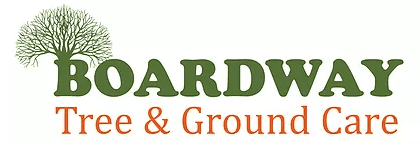
Useful tree work and ground care Terms
Tree work and ground care is crucial to a healthy garden and knowing the correct terminology can help you communicate with gardening professionals to help you get the best results. Here are some key phrases and their meanings.
Adaptive Growth – Increased wood production in specific areas due to a decrease in the strength of the wood or external loading to keep the distribution of forces across the structure even.
Adventitious/Epicormic Growth – New growth coming from new buds from main branches, stems or trunks.
Bracing – Installation of ropes, belts or cables to reduce the chance of the tree or part of the tree failing due to weakened elements.
Branch Bark Ridge and Collar – natural structures of union or fork that may be visually obvious. None of these should be cut.
Callus – Tissue that is a result of wounding and become tissues of the repair.
Cavity – A hole in the structure of the tree, usually due to decay or deterioration of the woody tissues. Only soft decomposing tissue should be removed to reveal the extent, if it is holding water it should not be drained. No attempt to expose living tissue should be made.
Co-dominant Stems – Two or more stems of roughly equal size competing with each other for dominance. It may be necessary to assess the structural integrity.
Coppicing – Cutting down of a tree within 12 inch of the ground regular usually done with specific species such as hazel to provide stakes etc.
Crown – Foliage bearing part of the tree formed by branches not including stem or trunk.
Deadwood – Non-living branches and stems due to the natural ageing or external influences. Deadwood provides habitats so it should be left wherever possible only removing when it poses a risk.
Decline – When a tree reduces leaf size, colour or density.
Dieback – Tips of branches that show no signs of life due to age or outside influences. Decline can either progress, stabilise or reverse as the tree adapts.
Dormant – When a tree is inactive, usually during winter months when there is little or no growth and leaves have been shed.
Drop Crotching – Shortening of branches by pruning the back end to a lateral branch at least a third of the diameter of the removed branch.
Fertilising – A substance used usually at the roots of the tree to promote tree growth or reduce decline.
Formative Pruning – pruning done in the trees early years to establish a desired form and correct any defects that may affect structure later in the tree’s life.
Fungi/Fruiting Bodies – Part of the plant kingdom that colonises on dead tissues of the tree or form beneficial relationships with the roots. Fruiting bodies bare the spores that reproduce the fungus. Removing the fruiting bodies may make a diagnosis harder and will not prevent further colonisation.
Lopping and Topping – Lopping is the removal of large branches and topping is the removal of large portions of the crown.
Painting or Sealing – A bitumen-based paint used to cover pruning cuts or wounds. This however is not beneficial for the tree and research shows it can be harmful.
Pollard – The removal of the top of a young tree to encourage multistem branching from that point. This should be repeated in cycles, always retaining the original pollard point.
Retrenchment Pruning – This is a form of reduction used to encourage development of lower shoots on the tree.
Root Pruning – similar to the pruning back of the branches only it is done to the roots. This can potentially affect the structure of the tree so always seek the help of a professional before attempting this.
Vitality – the degree of life functions within an individual or group of trees.
If you need the help of one of our tree surgeons, then contact Boardway Tree & Groundcare for a free no obligation quotation. Call us on – 01555 807 495

